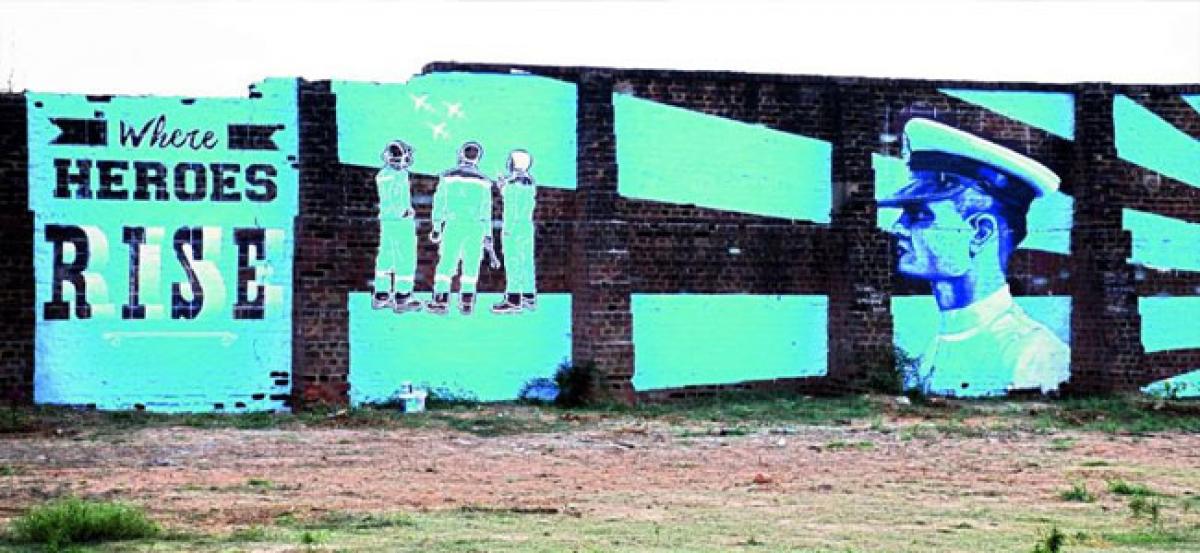Writings on the wall: Graffiti is art of expression but can also be vandalism

Earlier this month, 20yearold Abhimanyu, a BSc student and SFI leader from Kochis Maharajas College, was stabbed to death allegedly because of graffiti by members of the Campus Front the students wing of the Islamic Popular Front of India
To say that not allowing people to indulge in graffiti takes away their freedom of expression would be giving this too much importance.
Earlier this month, 20-year-old Abhimanyu, a BSc student and SFI leader from Kochi's Maharaja's College, was stabbed to death allegedly because of graffiti by members of the Campus Front - the students wing of the Islamic Popular Front of India.
According to the police, the victim was one of the students who wrote "communalism" over a graffiti made by Campus Front members.
Disputes over graffiti are a familiar form of political expression in colleges, especially in those with a strong political history like Jawaharlal Nehru University, Jadavpur University and, in this case, Maharaja's College.
In May 2017, secretary of the Delhi University Students' Union filed a complaint upon finding pro-ISIS slogans on the walls of the Delhi School of Economics.
In another instance in December 2016, five students of Maharaja's College were arrested over obscene graffiti on college walls hurting religious sentiments.
The question therefore arises -- Is graffiti a form of art and expression or just roadside vandalism?
While women artists such as Anpu Varkey from Delhi, Jheela Ghoradia from Mumbai and Leena Kejriwal from Kolkata have focused on the issue of women's empowerment, the subjects inside college walls varied from the IsraelPalestine conflict and gender inequality to Naxalism and price rise.
Graffiti was also the medium for social campaigns like 'Pinjra Tod' in Delhi colleges agitating for freedom of women students who lived in hostels.
According to Shaswati Das, a member of HIVE, the art society of Delhi's Lady Shri Ram College, art should not be regulated.
"LSR has a lot of restrictions on art. We don't really do anything that is political or which has nudity. We have to get the principal's permission before we do anything. It has taken us a lot of time to convince our principal to let us paint on the walls," she said.
Stressing on "constructive criticism" of graffiti, Neeru Ailawadi, the teacher in-charge of PRAKRITI, the environment society of Delhi College of Arts and Commerce (DCAC), agrees with regulation and "more freedom of content" to "mature students".
"The content of the graffiti can be dissent but not be offensive. Otherwise, things snowball and people take advantage of it, and campuses should be kept safe from that kind of a situation," she added.
The DCAC campus had a lot of graffiti before it was whitewashed two years ago. The reason for the whitewash was not disclosed.
Unlike Das and Ailawadi, who believe graffiti can be allowed and regulated instead of being banned, some like The Institute of Home Economics have asked for a complete ban on graffiti be it a political or casual expression.
In special cases, students are required to obtain permission from respective departments.
"The content of the graffiti has to abide by the theme and permission has to be taken from the respective departments. The theme cannot be decided by the students," Aashna Arora, president of Iridescence, the art society of IHE, told PTI.
Taking a bylane from the debate, Janki Devi Memorial College in 2016 held their first ever graffiti competition as part of their festival, Symphony 2016.
Interestingly enough, the themes were Queerosity, Intolerance and ODD.
Shweta Pal, Principal of Janki Devi Memorial College, said, "If the graffiti is artistic and thematic, it can be quite a powerful tool to express an idea or throw light on a particular issue."
"In a certain sense, anything and everything can be seen as restrictive. Like other modes of expression, graffiti can also be potentially harmful or dangerous. To say that not allowing people to indulge in graffiti takes away their freedom of expression would be giving this particular channel far too much importance," she added.
However, they had to stop after Delhi University issued an advisory in May 2017 to colleges under it to ensure the lack of any graffiti or painting on the college buildings. Existing graffiti was also removed.
"We used to regulate content. We were very clear about not wanting certain kinds of languages and sentiments. I am very hopeful that if the content and creation is regulated it is manageable," Pal said.
















